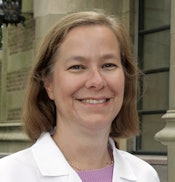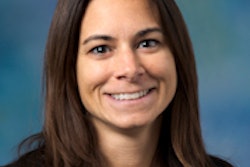
Twenty-one states have passed laws requiring women to be notified if their breast tissue is dense on mammography. But are the laws actually helpful? It's unclear, according to a perspective article published in the February 12 issue of the New England Journal of Medicine.
Breast density laws may be well-meaning, but they could increase unnecessary imaging exams and false positives for many women, according to lead author Dr. Priscilla Slanetz, from Beth Israel Deaconess Medical Center, and colleagues Dr. Pheobe Freer and Dr. Robyn Birdwell. The laws themselves are inconsistent: Some only require that physicians notify women with dense breasts of their status, while others also require that supplemental screening be offered. And most do not mandate insurance coverage of supplemental screening.
"The movement to inform women about their breast density has been driven primarily by grassroots organizations and laypeople," Slanetz and colleagues wrote. "The medical community has been more cautious because the ability to detect breast cancer is affected by many factors beyond the limitations of screening mammography, and evidence supporting supplemental screening is lacking" (NEJM, February 12, 2015, Vol. 372:7, pp. 593-595).
Putting density into perspective
Under the auspices of the Massachusetts Radiological Society, Slanetz helped craft the state's breast density legislation, along with Freer, Birdwell, and a larger multidisciplinary group of physicians and risk counselors. The law went into effect last July.
 Dr. Priscilla Slanetz from Beth Israel Deaconess Medical Center.
Dr. Priscilla Slanetz from Beth Israel Deaconess Medical Center."In the end, we managed to pass a law that doesn't mandate particular additional screening, but encourages women with dense breast tissue to meet with their primary care provider and discuss options," Slanetz told AuntMinnie.com. "This is a good approach because it will allow us to adopt the modality that proves most effective in the end, whether that be ultrasound, digital breast tomosynthesis, or abbreviated breast MR."
Part of the problem with how to handle breast density information is that measuring density is subjective, according to Slanetz and colleagues. In addition, recent changes in the BI-RADS radiologic reporting system may result in even more women being classified as having dense tissue: Instead of averaging a woman's breast density, the system will now classify any breast with a dense area as being dense.
"It's quite possible that the same woman's breasts may be classified as dense one year and not dense the following year," Slanetz, Freer, and Birdwell wrote. "Computer algorithms that calculate breast density are now available but have not been widely adopted. ... In reality, despite its limitations, mammography remains the only imaging method that has been shown to reduce the rate of death due to breast cancer."
Available evidence suggests that the breast cancer risk of women with dense tissue is 1.2 to 2.1 times that of women with average breast tissue density. In comparison, a woman's risk is doubled if she has a first-degree relative with breast cancer, and it increases by a factor of eight if she carries a BRCA1 or BRCA 2 mutation, regardless of whether or not her breast tissue is dense.
Also, there is little evidence to support widespread supplemental screening ultrasound, according to the authors. In women with dense breasts and above-average risk for breast cancer, ultrasound finds an additional 3.2 cancers per 1,000 women screened, but this benefit is probably lower in women with dense tissue who are at average risk.
"Even among women with above-average risk, [ultrasound] screening has extremely high false-positive rates; in several studies, only 6% of follow-up biopsies were positive, which suggests that supplemental screening unnecessarily increases rates of biopsy, costs, and patients' anxiety," they wrote.
Yet the breast density notification movement does have an important benefit: creating opportunities for physicians to build stronger communication with patients, according to Slanetz.
"Most breast cancer risk models leave out some major component of risk," she told AuntMinnie.com. "We don't want to underestimate a women's risk, but we also don't want to overestimate it. Often patients don't necessarily understand the pros and cons of the supplemental screening exams that are available. The key is to put breast tissue density into an overall perspective for women and educate them about their particular risk profile."




















